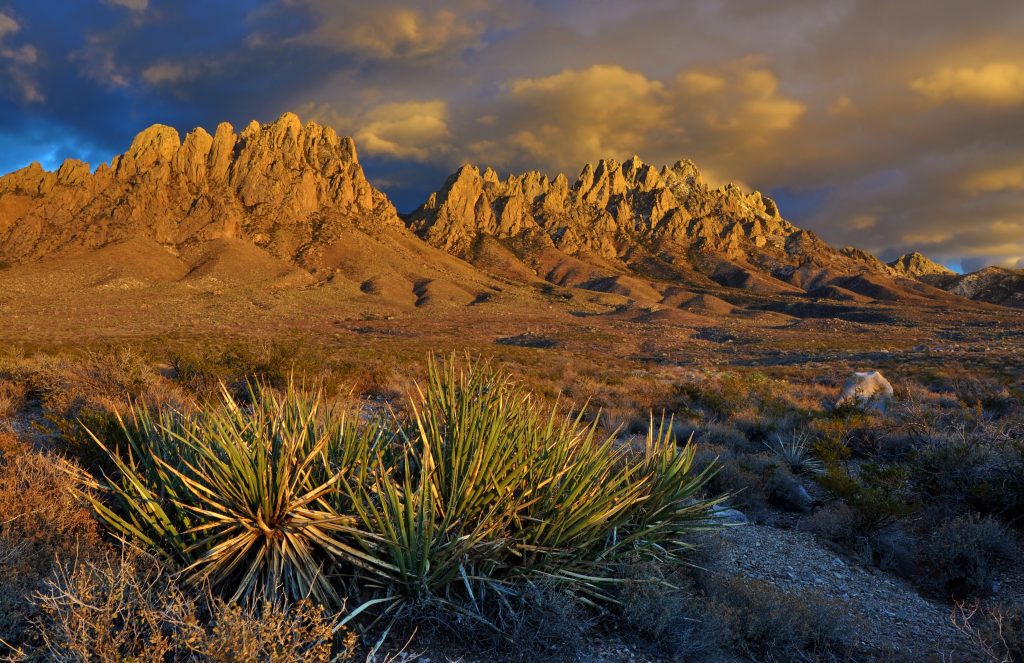On April 1, 2022 Roxy’s Law—a ban on trapping on New Mexico public lands more than a decade in the making—goes into effect after Gov. Michelle Lujan Grisham signed it last year. Nearly 32 million acres of public lands, including state-owned parcels, national forests, and Bureau of Land Management holdings will be free not only of cruel leghold traps, which can amputate and maim, but also from strangulation snares, body-crushing traps, and deadly poisons like sodium cyanide bombs. From the beautiful Latir Peak Wilderness to the incredible Florida Mountains, vast amounts of New Mexico will be safer for people, pups, and wildlife alike.
Along with Roxy’s Law, New Mexico has recently taken other meaningful steps toward protecting wildlife. In 2019, the state banned gruesome coyote-killing contests, events that reward indiscriminate and senseless massacres. Currently, the state is rolling out its plan for projects to protect wildlife from vehicle collisions along heavily used movement and migration corridors.
These are signs of a new era across the Land of Enchantment. An era in which coexistence is the norm, exploitation and cruelty are waning, and native foxes, bobcats, beavers, badgers, and wolves are revered for their ecological roles and honored for their intrinsic value, not persecuted as inconveniences. We are leaving behind nearly two hundred years of primarily viewing wildlife as merely something to slaughter and sell.
Still, New Mexico isn’t yet the beacon of wildlife management that it should be:
- A memorial urging the federal government to tackle the biodiversity crisis died without a vote on the state Senate floor last month.
- Our Game Commission has been a merry-go-round as the governor appoints and fires commissioners at her whim. Yet she has let a year elapse since the tragic passing of David Soules without appointing anyone to the conservation position on the commission. Without stability on the commission, it’s unclear where needed leadership will come from.
- The state is still on record opposing Mexican wolf restoration in the Southern Rockies, where lobos belong and where scientists say they need to live in order to fully recover.
Congress seems poised to pass the Recovering America’s Wildlife Act (co-sponsored by New Mexico Senator Martin Heinrich), which could provide funding to states to protect nongame wildlife. But our wildlife agency doesn’t even have the authority to manage or protect many species, including the Gunnison’s prairie dog, the Rio Grande sucker, and 23 of New Mexico’s 26 bat species, just to name a few. And they don’t want that responsibility; they want to continue to focus on the fraction of animals that are pursued and killed by sportsmen.
RAWA could be the inflection point New Mexico needs. Bold leadership is required to modernize the Department of Game and Fish. So, let’s remember there’s a lot of work still to do and progress to be made:
- We need a comprehensive state wildlife agency more invested in protecting all wildlife, not focused only on game species like elk and nonnative rainbow trout.
- We need a wildlife agency that sees all New Mexicans as stakeholders, not one that caters only to the minority of New Mexicans, who, like me, buy hunting and fishing licenses.
- We need a wildlife agency with the authority, will, and revenue to manage and protect the many wildlife species in our state.
Roxy’s Law alone is worth celebrating, of course. But it also represents a critical marker on New Mexico’s path to reimagining how we perceive and live with the wildlife that makes this place special. Let’s take the next step and push for a state wildlife agency that serves all the people and wildlife of New Mexico.
Like what you just read? Sign up for our E-news. Want to do more? Visit our Action Center.
